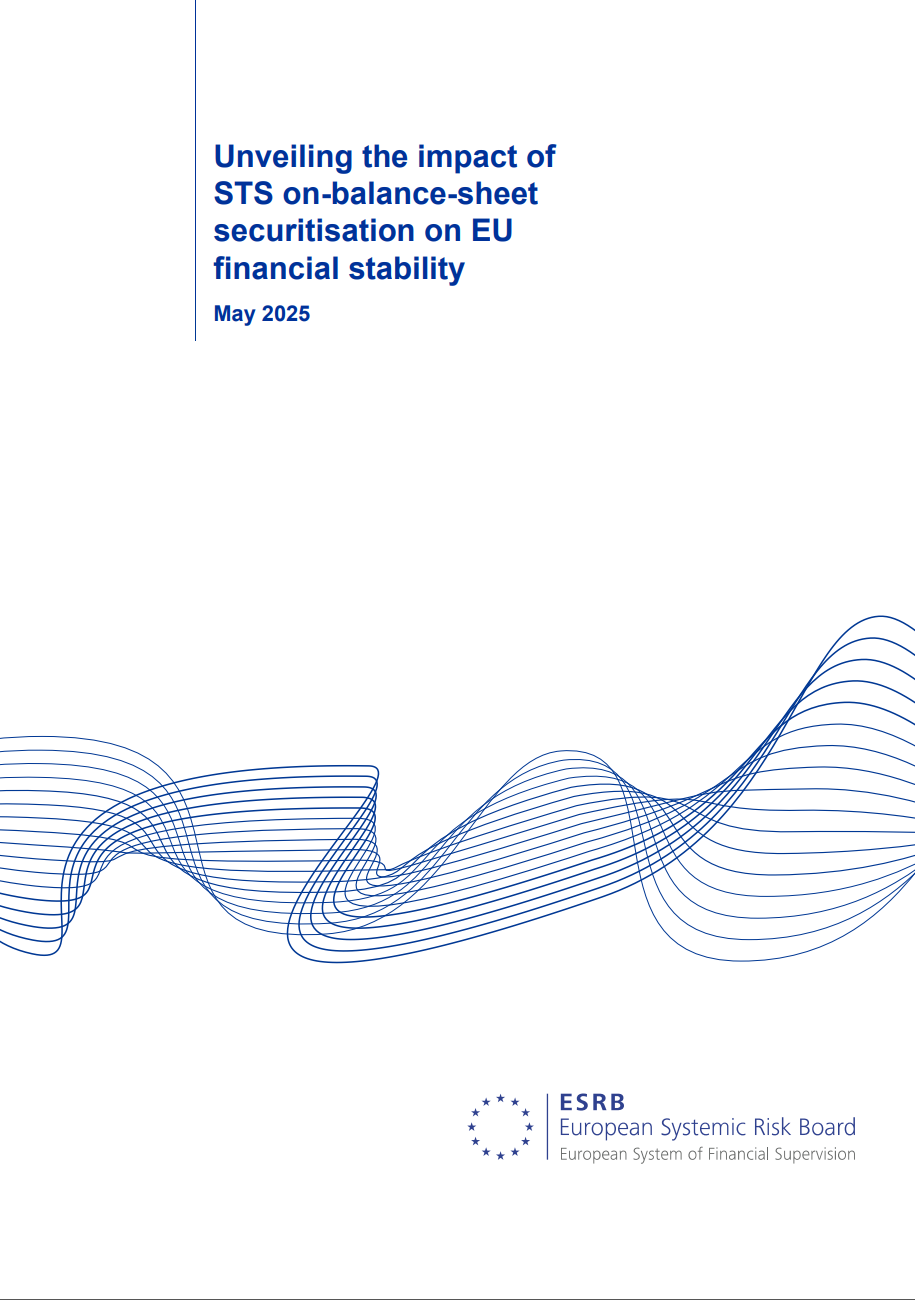The European Systemic Risk Board (ESRB) was tasked, following the crisis, with monitoring potential systemic risks in the financial markets. It was also specifically asked to report back on the systemic impact of extending the availability of STS status to synthetic transactions. It fulfilled that request last week with the publication of the jauntily entitled report : “Unveiling the impact of STS on-balance-sheet securitisation on EU financial stability”.
The ESRB should be commended for a very readable and informative report. First, their clear explanations make the document a very good primer for anyone confused by how exactly a synthetic securitisation works. Secondly, the ESRB’s access to data not publicly available allows them to present a very thorough picture of the current state of the market.
The report does include a number of statements which we would respectfully either disagree with or would argue provide only a partial view of the issues. But that is nothing new.
However, it was good that the ESRB concluded that the extension of STS status to qualifying synthetic securitisations generated no meaningful systemic risks. This came as no surprise to attentive observers of the market. But, as hinted in the title of this piece, this is good only as far as it goes.
The reason for tempering one’s enthusiasm at this positive conclusion is that, according the the ESRB, one of the key reasons for the lack of systemic risk is simply the lack of systemic relevance of synthetic STS.
We have heard much about the amazing growth in synthetic securitisation, particularly in the STS space. Yet, the number of banks originating synthetic STS securitisations in 2023 (the last year for which the ESRB report provides a number) was 17 – out of 3,812 EU financial institutions. Admittedly, these banks account for almost half of total bank assets in the EU and, in the second quarter of 2024, the five largest originators combined accounted for 58% of the outstanding amount of synthetic STS securitisation in the EU. But, despite this concentration, the ESRB points out that the loans underlying the synthetic STS securitisations of the five largest originating banks represented, on average, just 1% of their assets. In fact, overall in the second quarter of 2024, the exposures underlying synthetic STS securitisations represented on average 0.9% of the assets of all banks participating in this segment.
So, STS synthetic securitisations, although representing 40% of the total outstanding amount of synthetic securitisations and growing, is used by a very few large institutions to protect an extremely small portion of their assets.
It is clear that for securitisation – whether synthetic or traditional – to move the needle of European finance in the way called for by the reports of Mario Draghi or Enrico Letta, volumes will need to increase by an order of magnitude.

